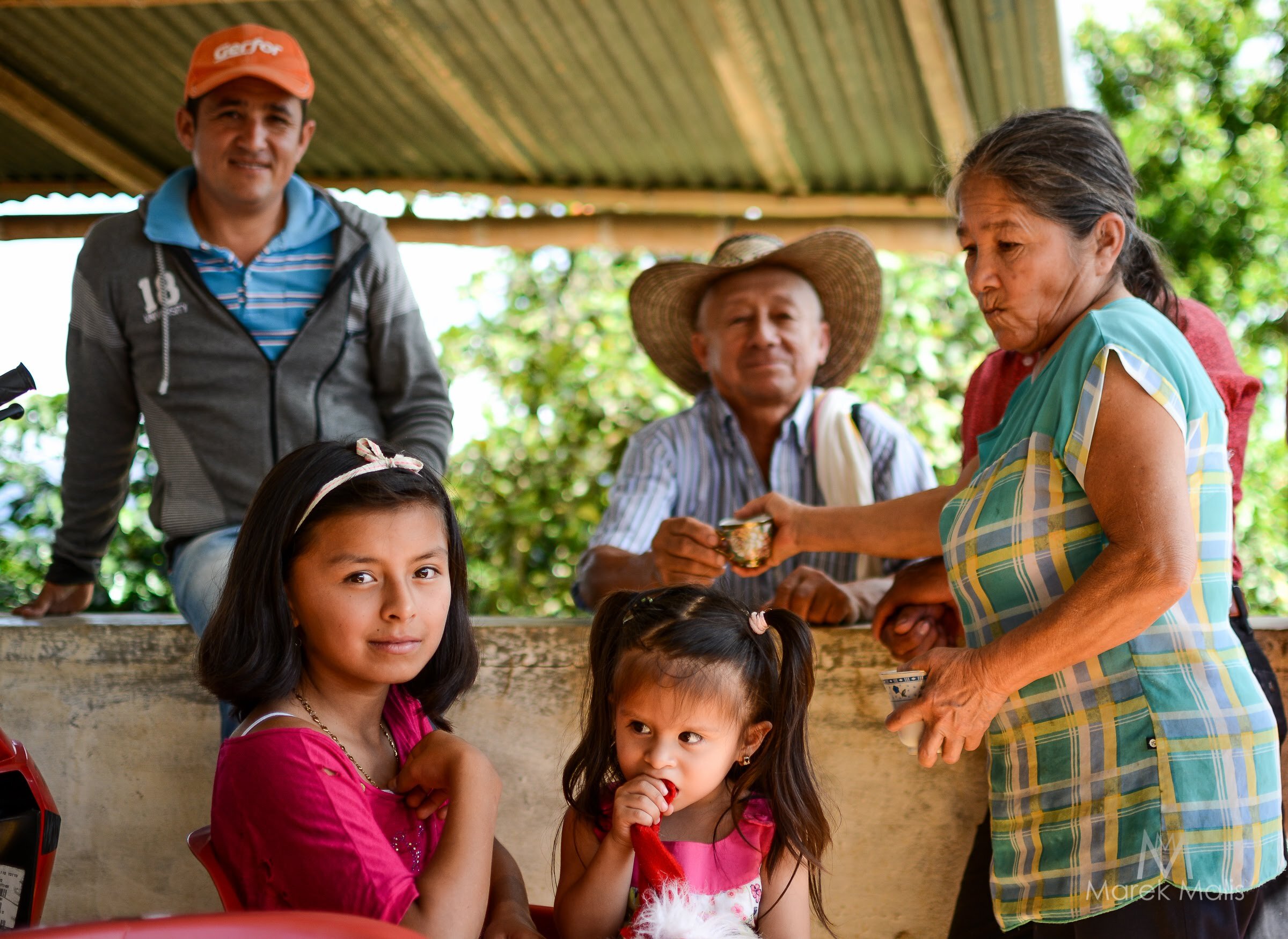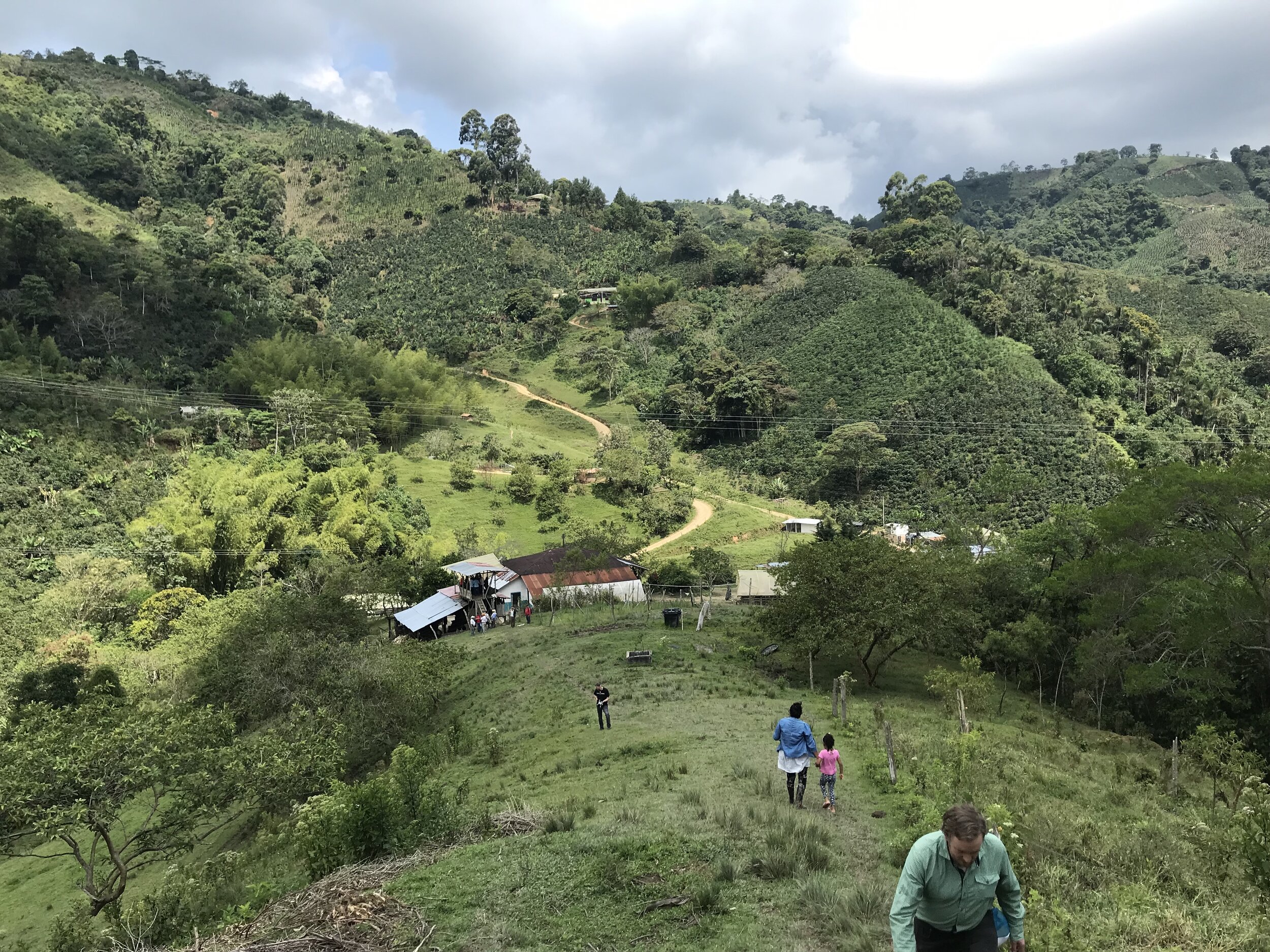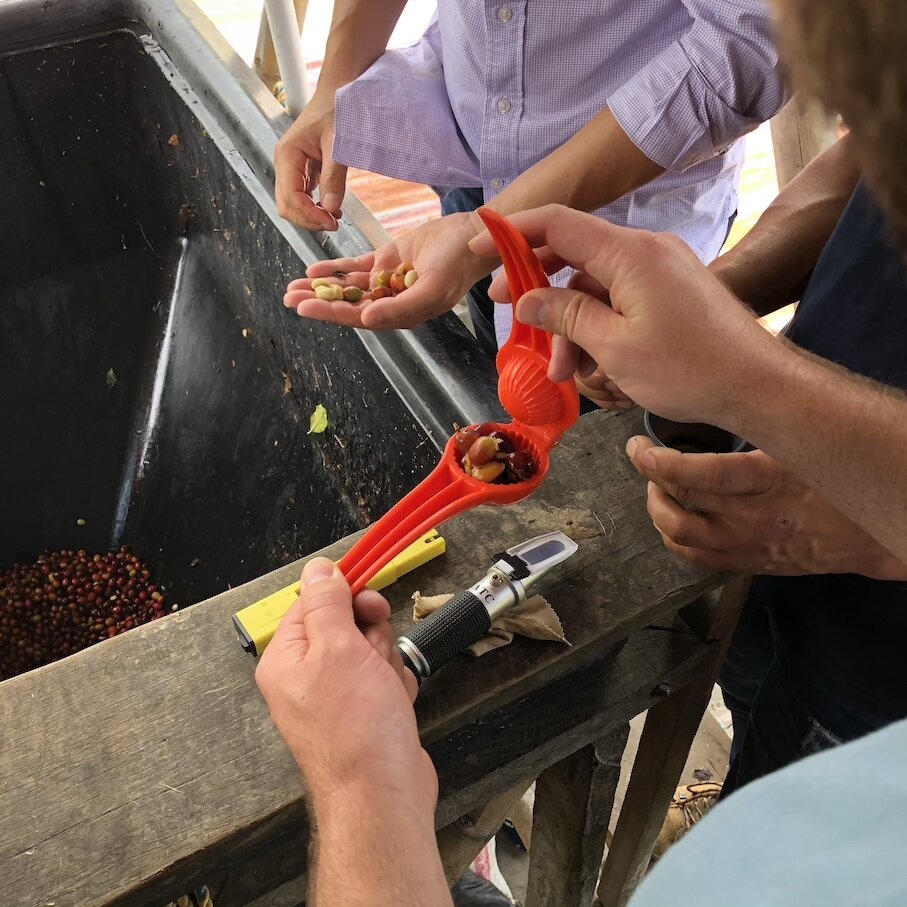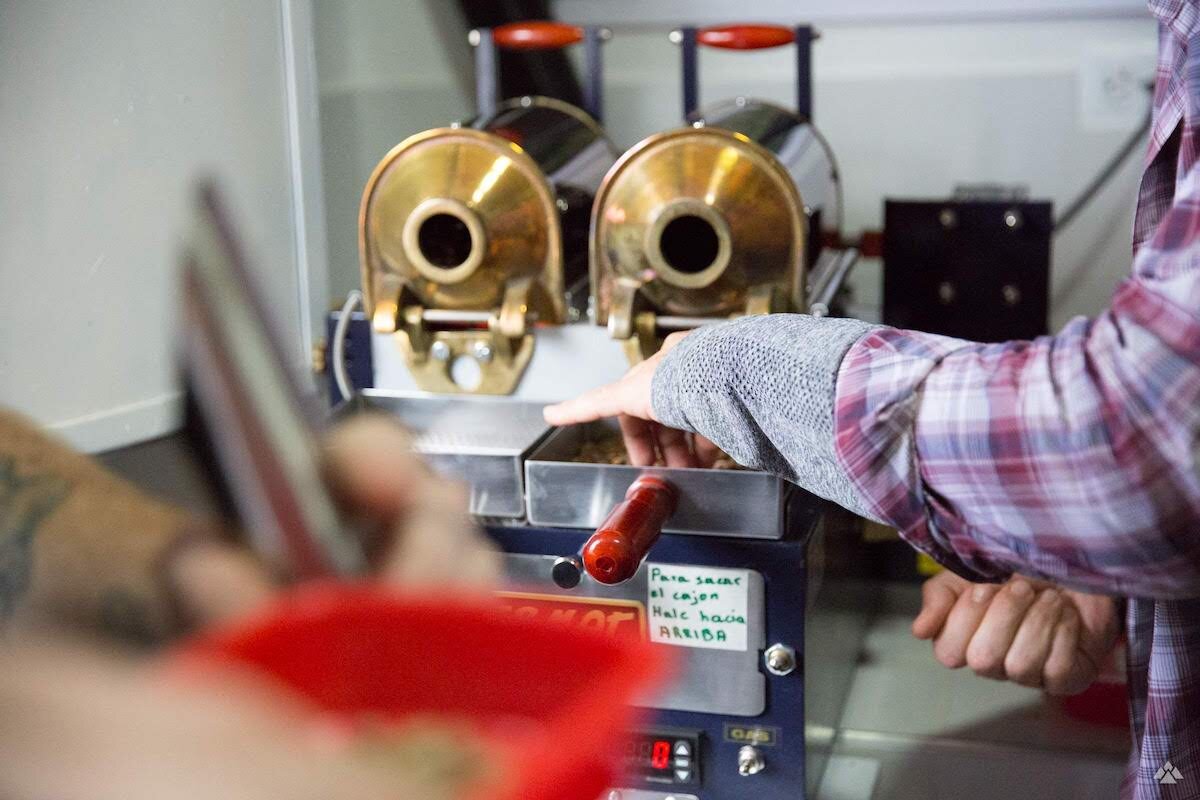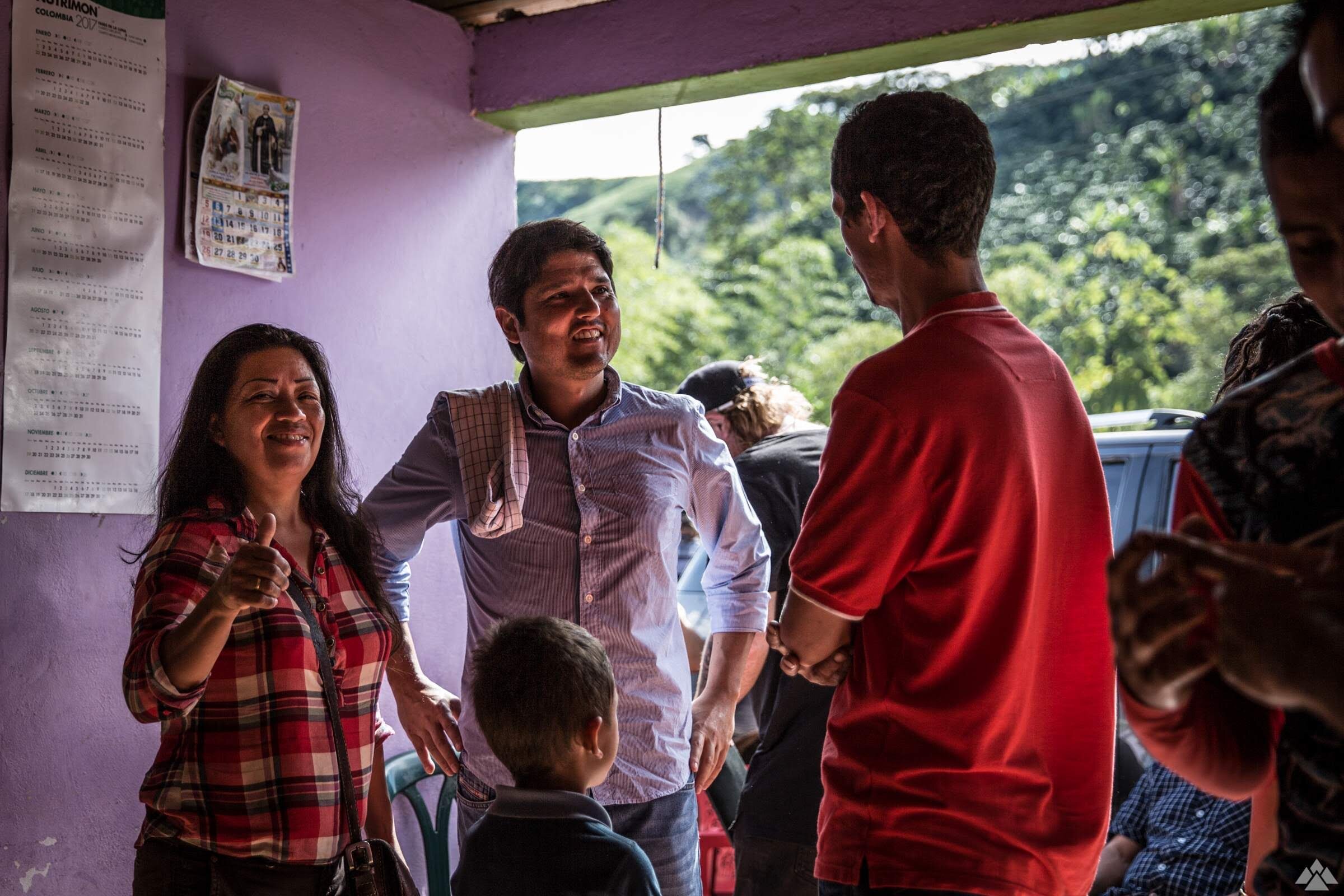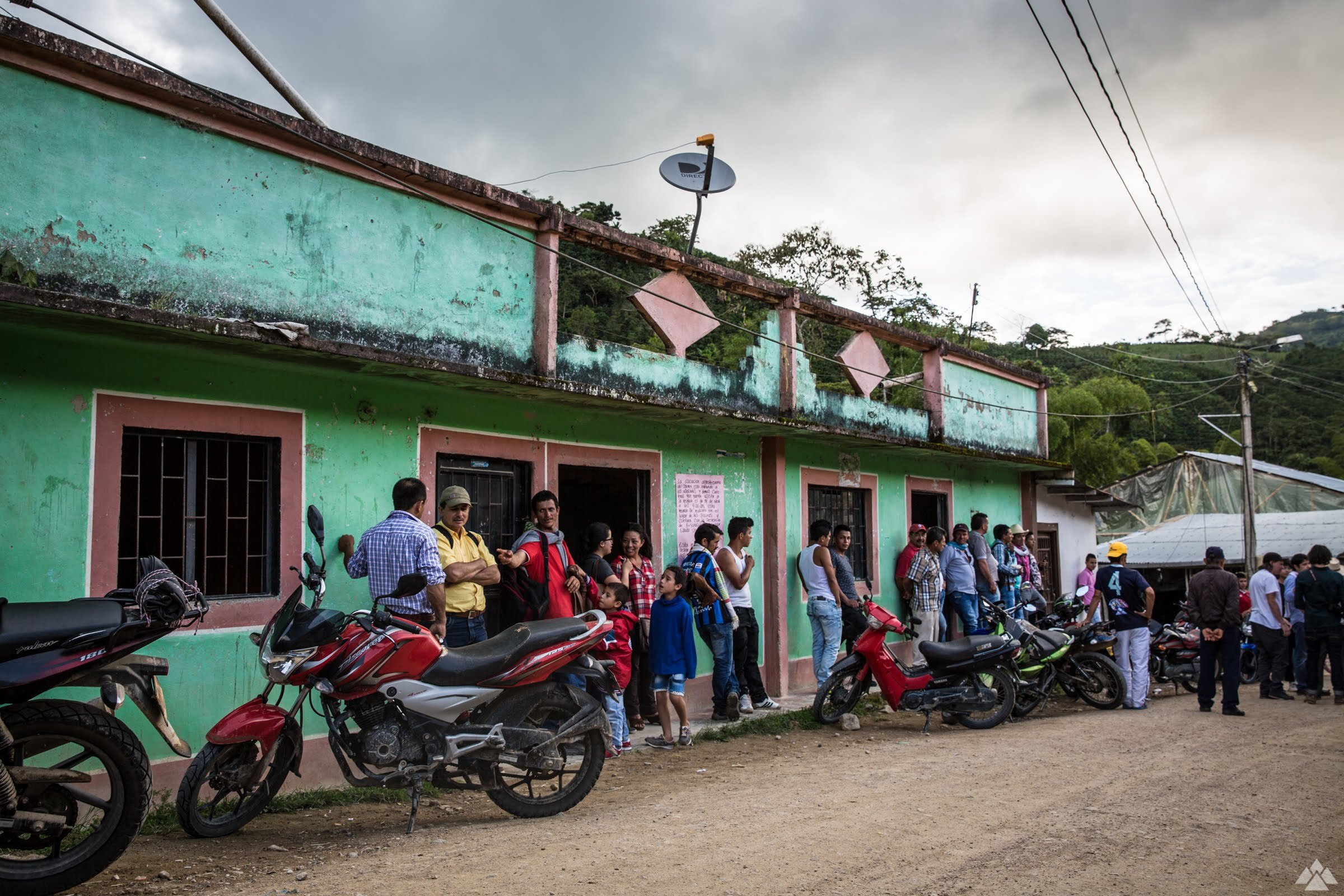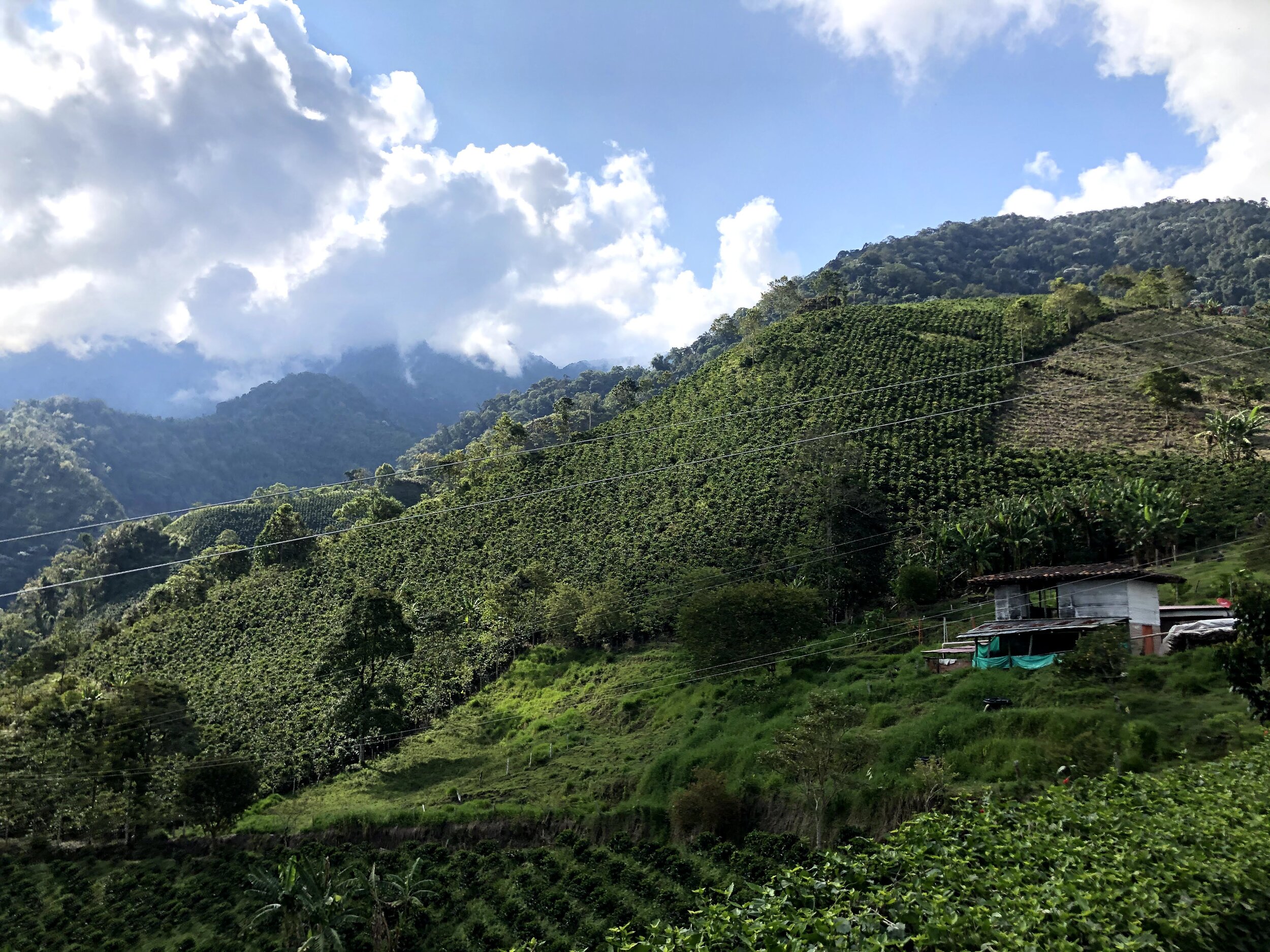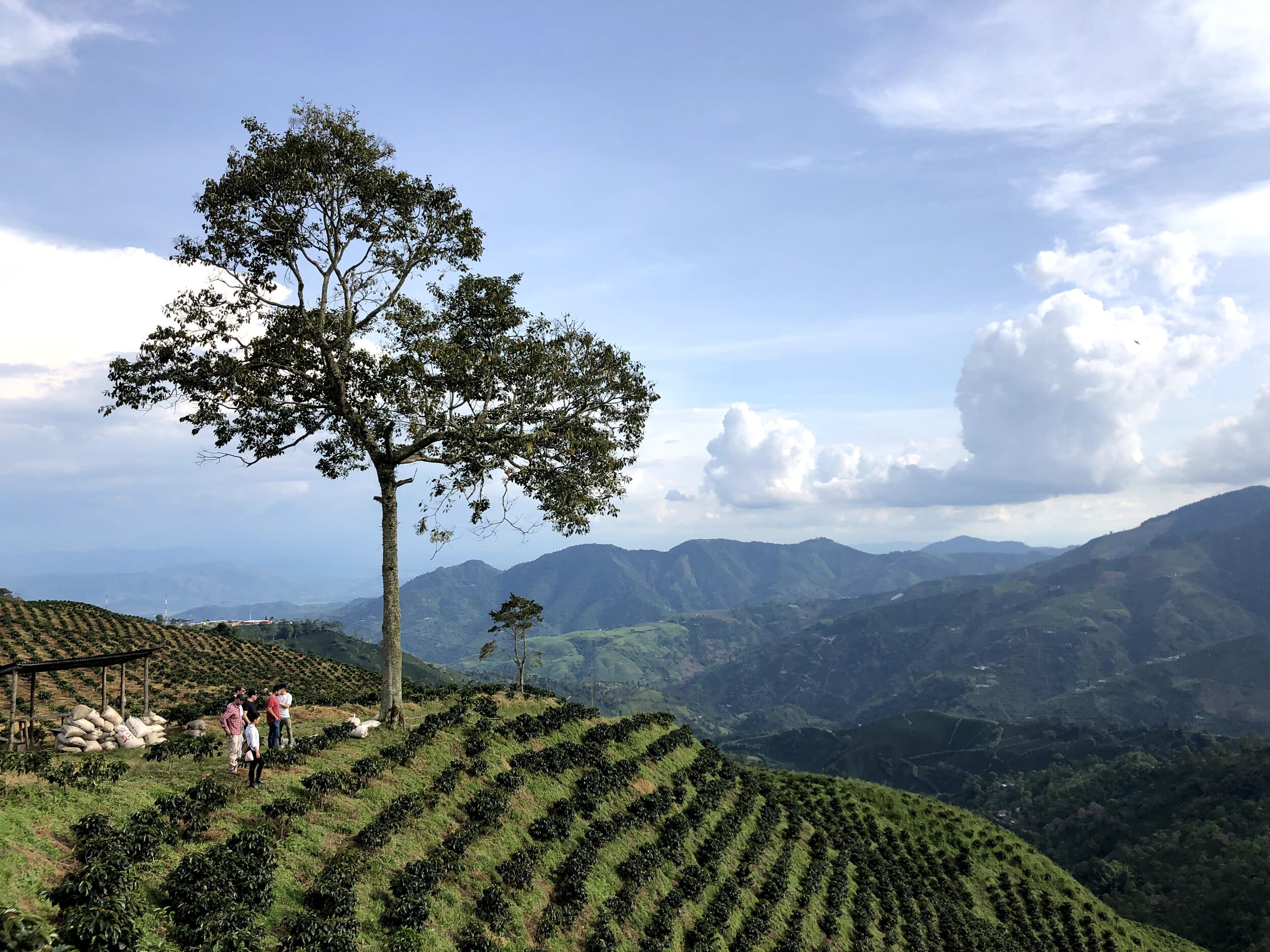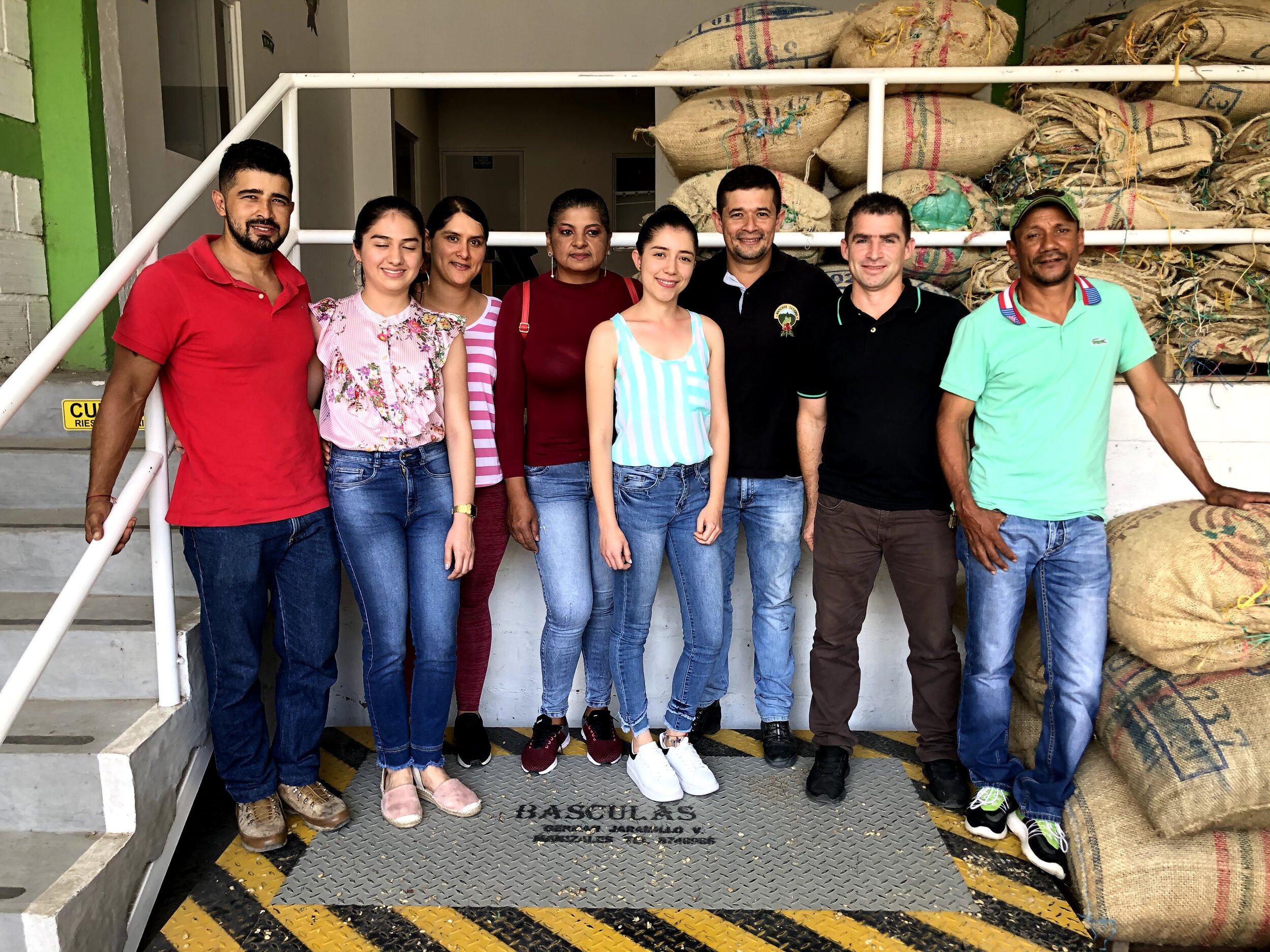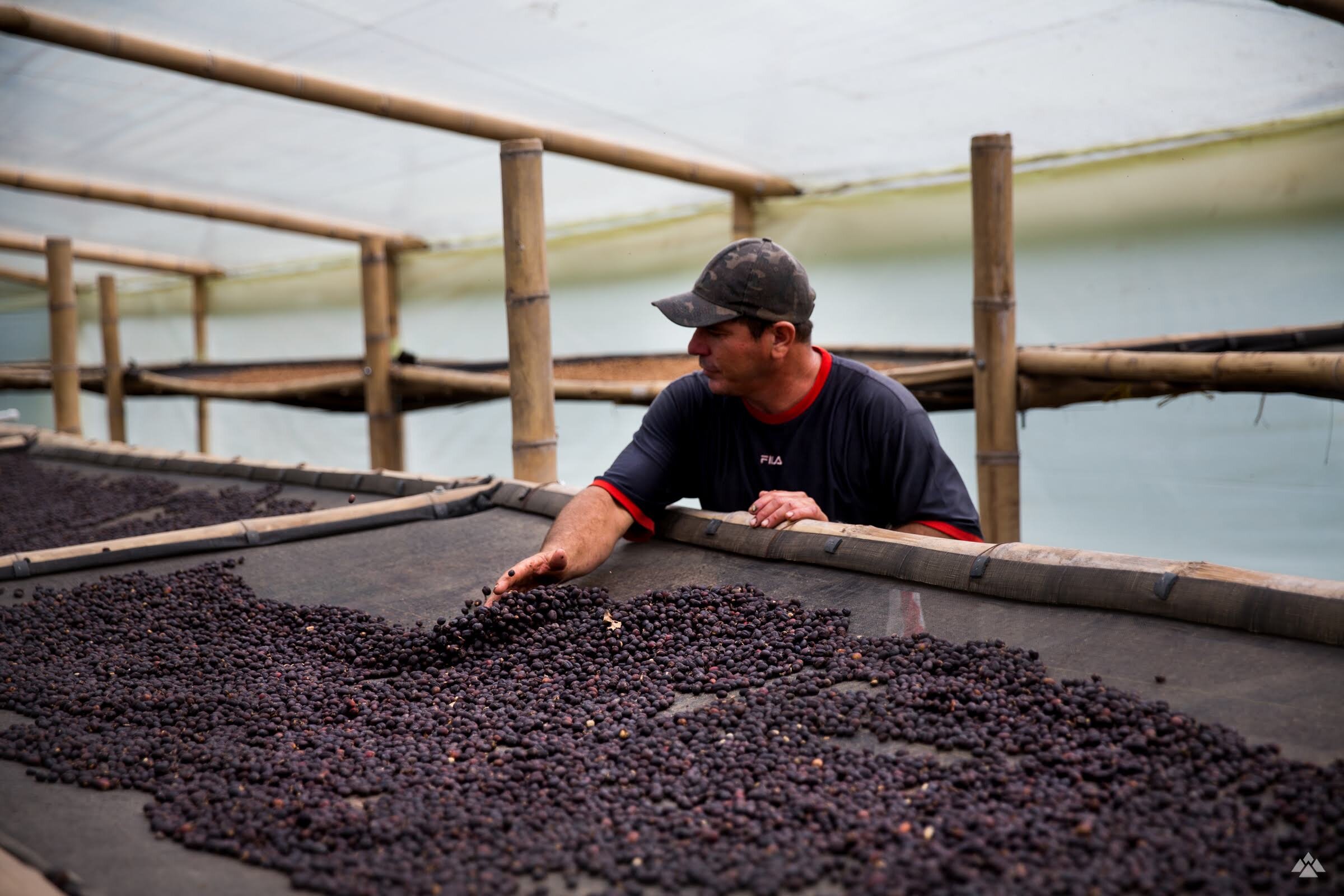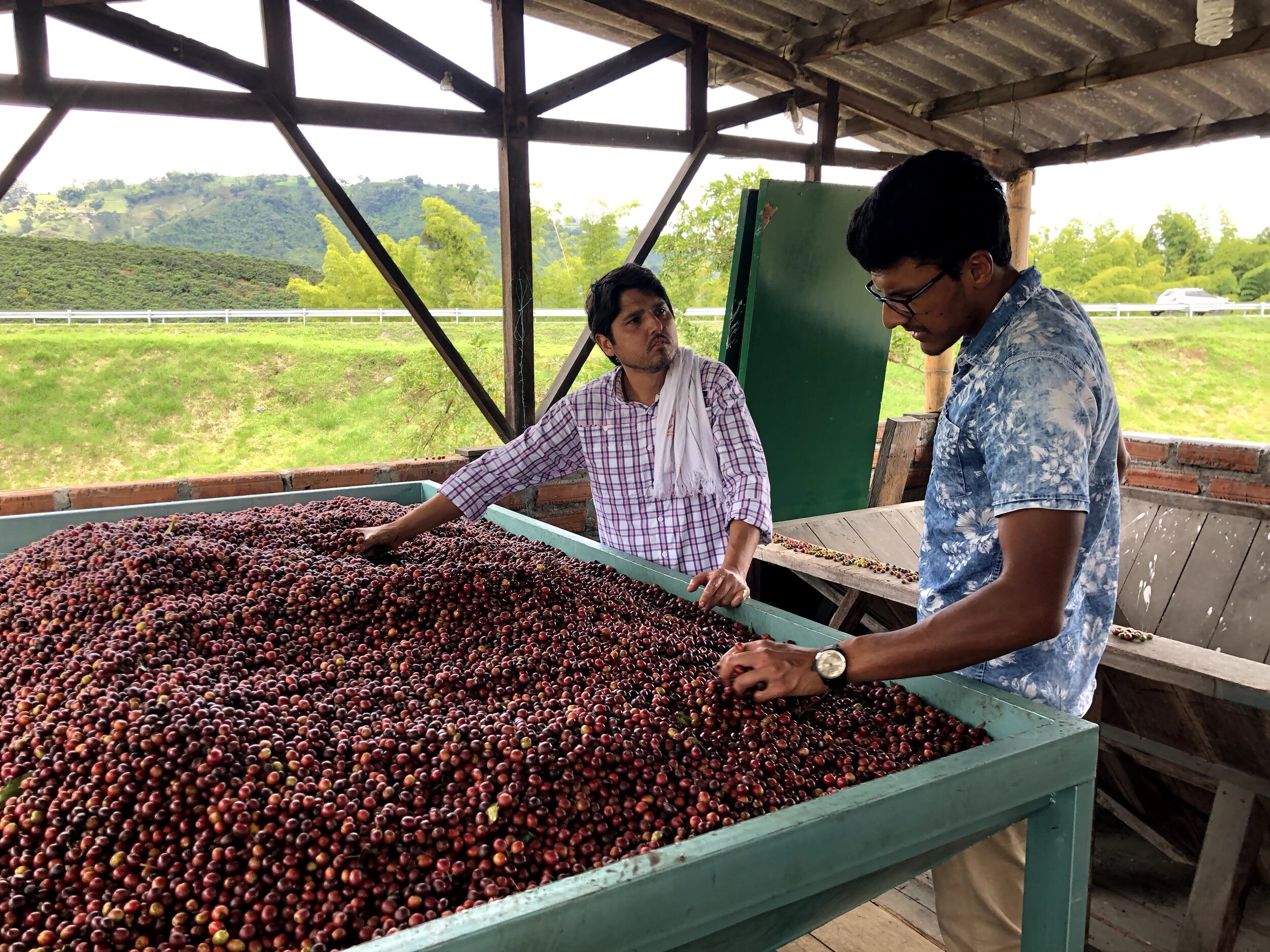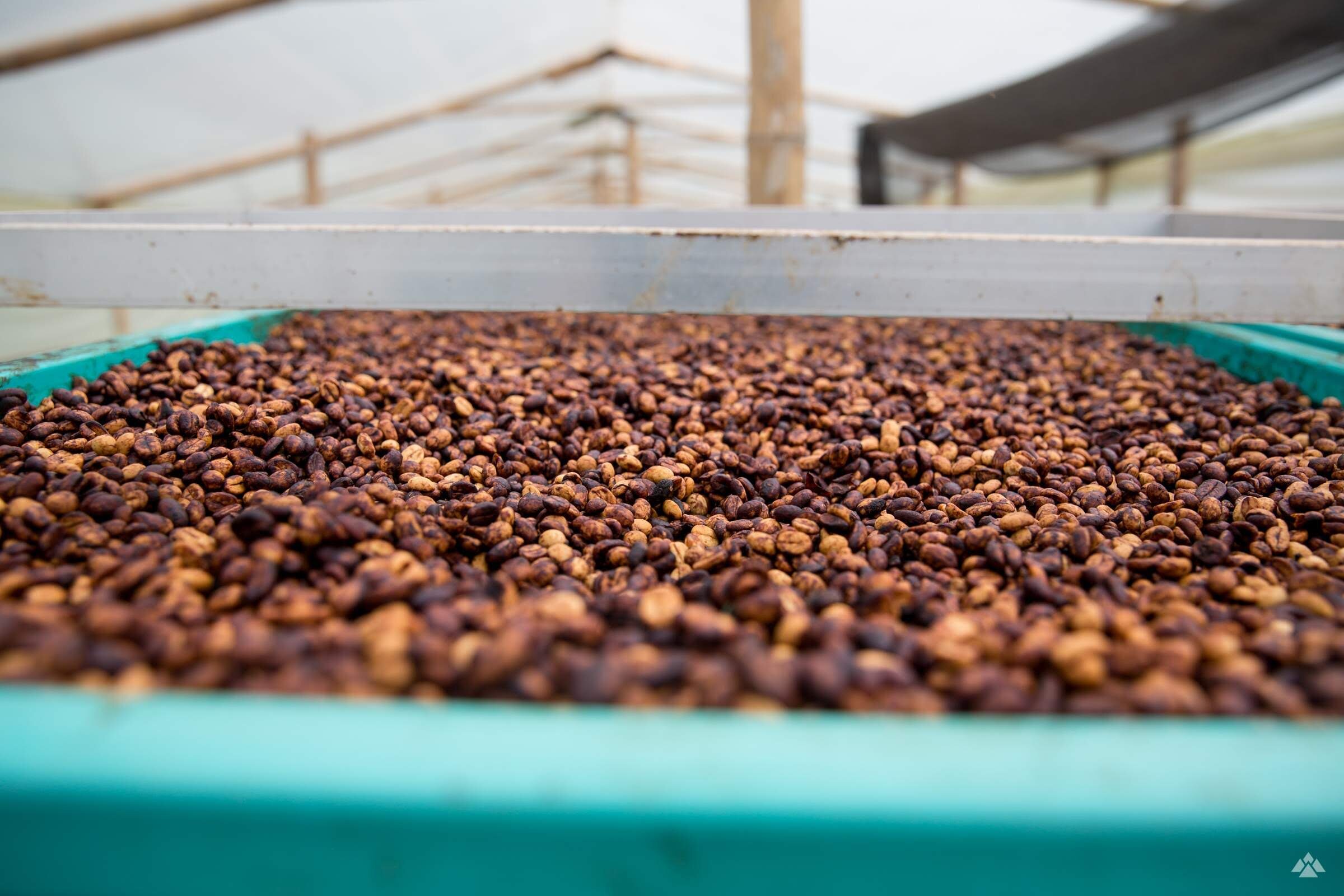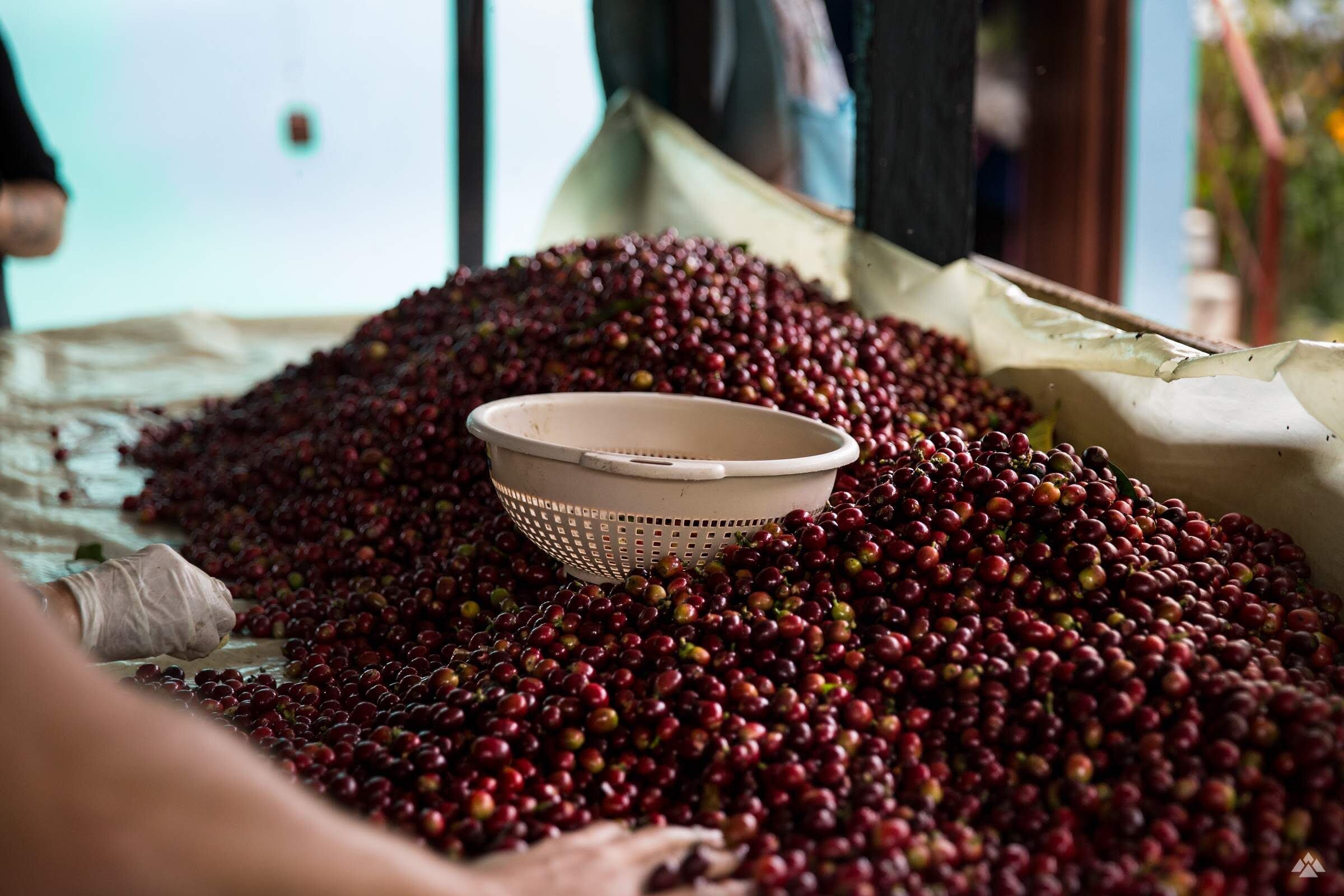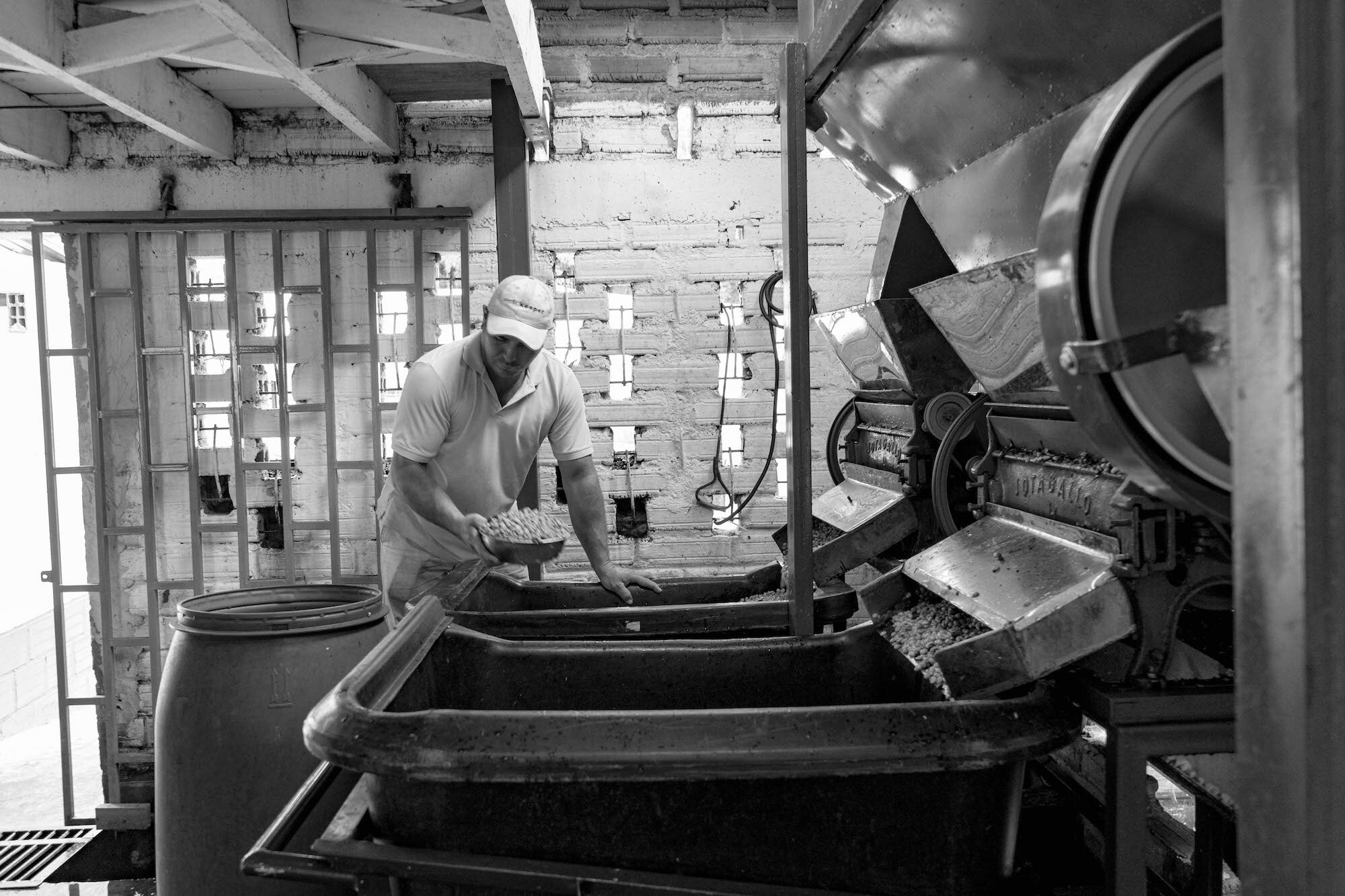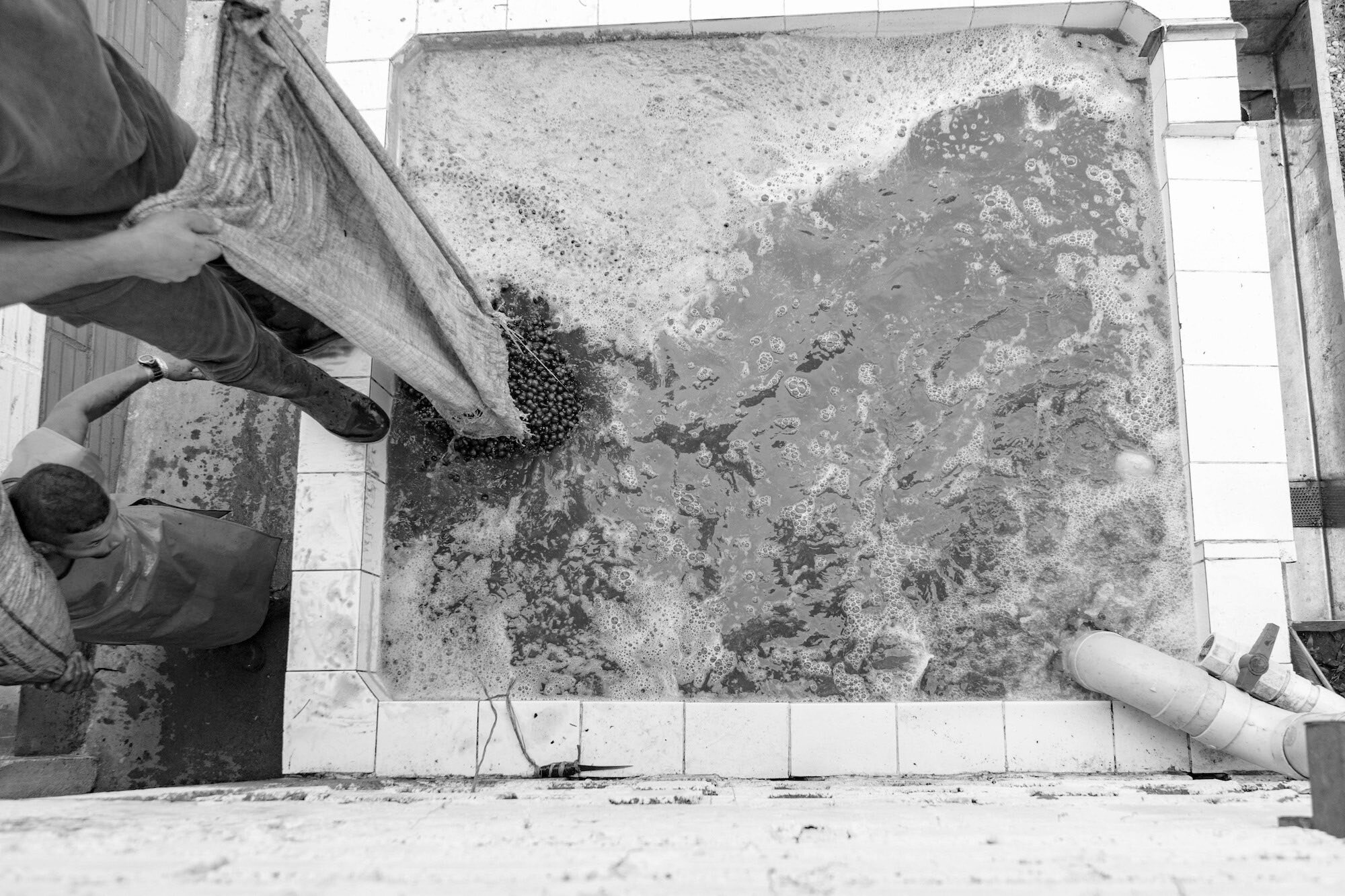In Colombia, we raise quality and shelf-life through low-cost interventions within existing structures.
We do this by creating systems to ensure consistency of large lots at a community level. This in turn enables reliable, stable and improved household incomes for smallholder farmers through a connection with roasters.
Our secondary focus is to shift the power dynamic in the coffee sector; as specialty becomes a norm, there are new opportunities for women to gain higher-income and higher-powered roles. The third area of focus is environmental; Colombia has a high average output per hectare, but this comes at the costs associated with mono-cropping and high-input farming techniques.
Producers of El Aguila cupping with visiting roasters
La Celia Women's Group, Risaralda
To improve household incomes, outcomes for women, and to encourage a shift towards more environmentally sustainable farming practices in Colombia we:
Set up cupping labs, and focus training towards women in the community
Build and join community associations, invest in infrastructure and training to improve quality, and take their coffee to market.
Place QC staff and equipment at parchment buying points to improve consistency.
Consult wet mill operators and producers in-person on best practices.
Purchase for consistent prices based on what coffee costs to produce and what roasters are willing to pay to maximise profitability for producers.
By working with Raw Material, producers have a sustainable reason to invest in quality.
Breakdown of a typical price paid for coffee through Raw Material
Figures are displayed in USD/kg. All values have been converted to green bean equivalent (GBE) at 0,20 prep.
All data is based on the 2020 harvest data, represented by our mode and median average coffee price; the Red Associations coffees (El Carmen, Santuario, El Aguila etc).
Assumptions: 3400 COP to 1 USD (average rate Dec 2020-Jan 2021) Parchment to milled green @80% yield, 4% removed as defects to reach 0,20 EP physical quality.
Click to expand and learn more
El Carmen, Huila
-

The Red Associations began with El Carmen
In Huila, climate change events were a major factor pushing families into a cycle; they increasingly sold their coffee as wet parchment to drying station intermediaries, resulting in quicker payments, lower prices, and high chance of defects. For those selling wet parchment, average household incomes had dropped below 1,000 USD/annum.
By 2018, we were able to include value-adding steps traditionally out of reach from most producers
This comprised of hulling and green sample analysis, roasting, and cupping. This culminated in the separation of lots by value based on quality at the association level. With this level of QC now in the hands of the community, while lots are still attributed to individuals, it was possible to start efficient ad-hoc, and in-person production training. Neighbours whose coffee consistently made the grade, partnered with those not reaching the quality required, and they visited each other’s farms to problem solve.
Risaralda

Known for its impressive rambling green mountainous areas, Risaralda is home to a vast range of coffee producers' associations.
The Risaralda regional blend for roasters is made of coffee from three associations; Santuario, El Aguila, and Entreverdes. These coffees are purchased as dry parchment for a minimum of 1,000,000 COP/carga year-round, and roasters pay consistent prices based on that cost.
We have invested in quality control systems at the association’s headquarters, and with one full-time Raw Material employee focused on improving production techniques and information sharing in this region.
By supporting the Risaralda Regional Blend, roasters provide economic stability and a consistent market for a large portion of this community’s harvest. For specific information on each of the associations in Risaralda, please head to the Roasters’ Portal.
Risaralda is the perfect coffee for large roasteries looking for a continuous fresh supply of 83-85 point washed coffee.
El Aguila, Valle del Cauca

El Aguila is also known by its full name, Asotatama El Aguila.
Located in the municipality of El Aguila in the department of Valle del Cauca, the association is comprised of 93 members. These producers are spread across an incredibly unique stretch of mountains, in the Tatama National Park. This geographical transition between the Andes and the Pacific Area of Colombia is biologically abundant, and an impeccable place for coffee production where the producers live, between 1700-1900 MASL.
Members of Asotatama El Aguila
Alongside supporting El Aguila through long-term relationships with roasteries around the world, we expand our support through training and knowledge sharing.
From 2019, we began planning trips for members of El Aguila to visit our community and wet mill and farm, El Fénix, in the department of Quindío. At El Fénix, we run in-depth training courses, and qualitative cuppings. It is the perfect of opportunity for us to share our knowledge whilst learning from the producers we work with.
Like the majority of associations, the individual farms that comprise it vary in size. For El Aguila, these farms range between 5 and 15 hectares, where three main varieties are cultivated and blended to form the association's coffees; Caturra, Castillo, and Variedad Colombia.
Villamaría, Caldas

In the past, high-altitude, high-potential cherries were being processed to a low final quality in the mountains of Villamaría. To change this, we invested in one central collection point at Finca La Aurora, and built large drying facilities down the mountain in Chinchiná where it is warmer.
This has resulted in extremely high quality lots (88-90pt) and consistent naturals from the cherries of Villamaría. This model is similar to that of El Fénix, our community wet mill and farm in Quindío.
Villamaría is a Colombian municipality located in the department of Caldas. The region is fed by numerous sources of water and natural resources. It is located a few kilometres from the city of Manizales, whose urban areas are surrounded by the Chinchiná River. Our drying station "Jamaica" is located in Chinchiná, Caldas. The station currently represents the harvests of 30 to 50 coffee producing families in the surrounding area of Villarazo, sitting at altitudes higher than the drying station itself. As Jamaica sits at a lower altitude of 1300 MASL, it is better suited to the processing of honey and natural coffee, due to the hotter temperatures found here.
This results in earlier payments and higher returns for producers.
The region of Caldas is also home to the sugarcane decaffeination process.
Nearby Manizales is home to Descafecol, Colombia’s most successful sugarcane decaffeination plant. Sugarcane production is voluminous in the region, and the organic by-product of this is used in the decaffeination of coffees.
Chinchiná is also home to the Fundación Manuel Mejía, a foundation which distributes subsidised educational material for coffee producers in Colombia.
Learn More About Colombia





